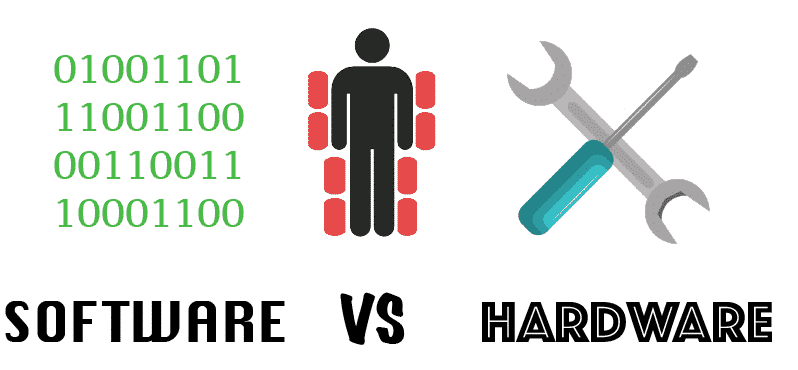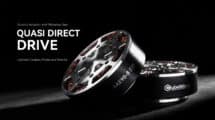The research frontier of exoskeleton development is beginning to shift from hardware to software. As what works and what doesn’t becomes clearer on the hardware end, software for controlling and evaluating the exoskeleton devices becomes the new focus. Recently, there have been major advances in exoskeleton software:
- Active Pelvis Orthosis (APO) main application: balance control
- Optimized Power Transfer
Exoskeleton Software for Balance Control
The École Polytechnique fédérale de Lausanne (EPFL) released a video showing some of their progress on the EU funded CYBERLEGs project. Until now, exoskeletons and powered prosthetics have hindered, rather than help, the user in a slip condition, making it more likely for the user to fall down. This, of course, is the opposite of what exoskeleton manufacturers want to happen. Ideally, exoskeletons, especially those for the elderly, should help the user maintain balance.
While most exoskeleton development efforts in Asia have been focused on wearables to help an aging work force, and in the U.S. to make commercially successful products, research in the E.U. has been focused on understanding falling and balance. In the 2016 presentation during WearRAcon16, (see WearRAcon16 Report Day 3). All the years of making robots and test walkways to make people fall appear to be paying off.
Much work remains for the exoskeleton software developers. The current Active Pelvis Orthosis (APO) is only a hip exoskeleton. The ultimate goal would be to make a full body exoskeleton with a complex software architecture that can correctly react to the user losing their balance (see: Building In Reflexes and Closed-Loop Communication Into Exoskeleton Design).
Here is a link to the study at BioMed Central and a less technical summary by Science Magazine.
Exoskeleton Software for Optimizing Power Transfer
By Karl Zelik, Assistant Professor, Vanderbilt University:
“This work is based on our collaboration between biomechanical engineers at Vanderbilt University and wearable roboticists at Harvard. Robotic exoskeletons are cool & promising technology, but humans are squishy, and in order to maximize the health and performance benefits of exoskeletons we need to measure, understand and optimize how we transfer assistive power from our devices to augment human movement. Just as a car’s engine is only beneficial if the power it generates can be effectively transferred (via the transmission system) into movement of the vehicle, exoskeletons are only beneficial if the power they generate can be effectively transferred to assist the human user.”
Here is a link to the study, which is currently a Featured Article in the Journal of NeuroEngineering & Rehabilitation: https://jneuroengrehab.biomedcentral.com/articles/10.1186/s12984-017-0247-9
And here is a less technical summary from the Vanderbilt School of Engineering: https://engineering.vanderbilt.edu/news/2017/zelik-yandell-exosuit-human-interaction/
This research has two components, one is hardware: how to attach the exoskeleton to the human body, and one is software control, when to apply power and how much?
Samsung GEMS (Gait Enhancing Mechatronic System)
Samsung, which has several exoskeleton patents, has also been busy. Researchers presented two papers based on a Samsung hip only powered exoskeleton at the ICORR 2017, the 15th IEEE International Conference on Rehabilitation Robotics held in London. You can see all papers presented, notice how many are exoskeleton related: ICOR 2017 Technical Program.
The Samsung Mechatronics Lab at the Samsung Advanced Institute of Technology developed the GEMS, and the new research shows that it can bestow as much as 13% 21% reduction in metabolic cost (with vs without exo condition) when walking on a treadmill, but only when the control timing is perfectly optimized. It must be emphasized that this optimization is currently done under only one to four conditions (example: constant speed on a flat, even treadmill). Future control systems will have to be able to change motor output timing on the fly for changing terrain, slope, and surface conditions. This will be a daunting task for sure!
And the Samsung team is already answering the challenge of changing slope by developing the GEMSv2, which is optimized to be used on slopes. A curious, early conclusion by the research team is that hip exoskeletons are more efficient on an upward sloped surface.
Additional developments:
But it is not only research labs that are making progress with exoskeleton software. Companies have made reached some milestones too:
- H-WEX comes with a phone app control to change the power output on the fly.
- Virtual Reality software is becoming more linked with wearable sensors and devices (see: Physical Rehabilitation with Exoskeletons and Virtual Reality)
- Ekso Bionics has launched a wireless cloud system that can pull all relevant exoskeleton performance data and store the data on the cloud, and that is in addition to their variable assist control software
- StrongArm Tech has launched the FUSE Risk Management Platform, a wearable sensor system that can evaluate the kinematics and performance of a warehouse employee with and without an ergoskeleton. Wearable sensors such as, dorsaVi sensors, are becoming increasingly popular in today’s society.
- Wondercraft is moving forward with creating a walking assist exoskeleton with dynamic walking.
- The ARKE gait assist exoskeleton now features Alexa voice control.
The competition to make the best exoskeleton product is slowly shifting from a race for the best hardware, to a race for the best software. While the exoskeleton industry isn’t there yet, things are starting to resemble the semiconductor industry in the late 2000s. Competing robots for wafer handling used various hardware setups: some had rotating rails, some had single beam arms and some had multiple. At the end of the day, all hardware solutions were successful in moving a wafer from point A to point B. The distinguishing factor between the devices transitioned from hardware to which one has the better software and more reliable architecture with less down time.
References:
Fall prevention exoskeleton:
A powered exoskeleton prevents the elderly from falling, May 2017, EPFL News, https://actu.epfl.ch/news/a-powered-exoskeleton-prevents-the-elderly-from-fa/
Exoskeleton prevents seniors from falling, May 2017, YouTube, https://www.youtube.com/watch?v=Sg4F9FnOl9Q
Physical human-robot interaction of an active pelvis orthosis: toward ergonomic assessment of wearable robots, April 2017, Journal of NeuroEngineering and Rehabilitation, https://jneuroengrehab.biomedcentral.com/articles/10.1186/s12984-017-0237-y
Exoskeleton Software for Power Transfer:
Here is a link to the study, which is currently a Featured Article in the Journal of NeuroEngineering & Rehabilitation: https://jneuroengrehab.biomedcentral.com/articles/10.1186/s12984-017-0247-9
And here is a less technical summary from the Vanderbilt School of Engineering: https://engineering.vanderbilt.edu/news/2017/zelik-yandell-exosuit-human-interaction/








I want to let you know updated result of Samsung GEMS at the ICORR 2017.
It seems you have talked about the ICORR and quoted the old result of GEMS.
Its new results indicate that net metabolic cost exhibits a concave
up pattern with the most reduction of 21%, when compared to walking without the exoskeleton.
Please Check it again!
Thank you so much for the input! You are correct, the article has been corrected to 21% metabolic cost reduction.